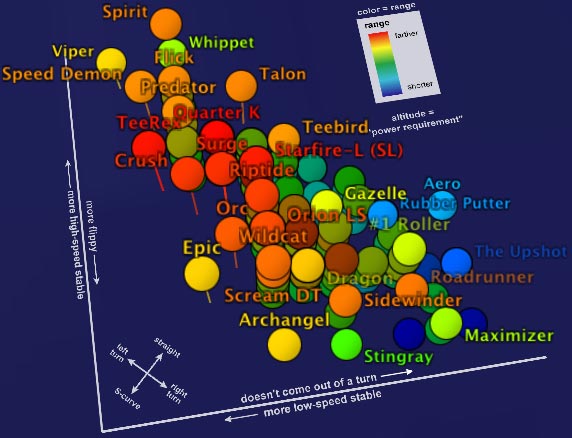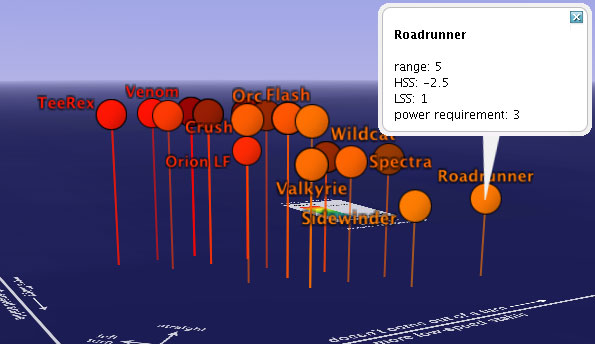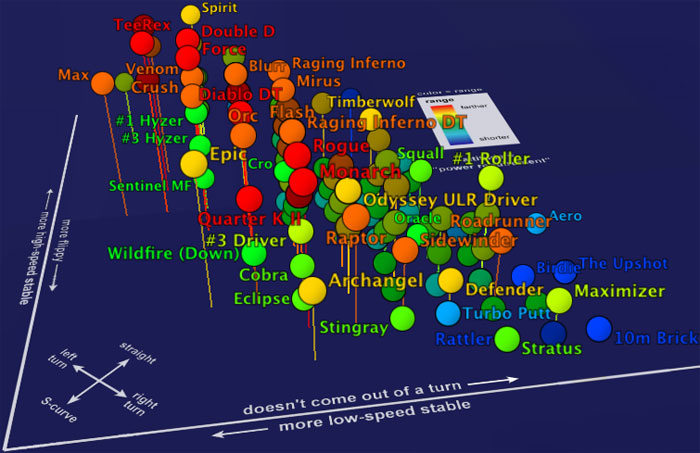JR
* Ace Member *
Is it possible to add the best height of a hyzer to flat throw with a proper nose down angle for as straight a shot as possible thrown with proper technique? Is it possible to state an average offset to all of the old categories and best apex height and nose down angle for those who don't thow with correct technique in the JFC? Preferably for total newbs that do most things wrong and those that just muscle it hard without proper mechanics, timing, power focus and snap? That's me in the last category so far. Hopefully not long. My experience has been that by muscling HSS has been on the average around 1 to 1.5 too low for me. LSS around 0.5 to 1 higher from the one stated. Naturally understable discs and rollers have more variation in HSS than overstable pigs. That would also be a helpful disclaimer in the JFC.
What I find difficult to find an offset for is required power. In my case Orion with a power requirement of 4 fies as far as do many fivers. I have thrown too overstable discs because of not telegraphing my shots properly. With max low line drive distance of 100 meters in headwind in winter clothing with 150 g Sidewinder that got hit by the wind at the end of the flight with average around 85 meters in calm conditions for all weights and stabilities of discs. Summertime records are little over 100 m at 10 % success rate when I'm properly warmed up in calm conditions for various power requirement discs between 3 and 5. With discs released flat not nose down in low line drives from 2.5 meters to around 7 meters tops at the highest point of trajectory.
I don't look at the power requirement much. I throw 3s, 4s and 5s to the same average distance. Only good throws differ. And only by a couple of meters so the difference could come from other factors as well.
Janne
What I find difficult to find an offset for is required power. In my case Orion with a power requirement of 4 fies as far as do many fivers. I have thrown too overstable discs because of not telegraphing my shots properly. With max low line drive distance of 100 meters in headwind in winter clothing with 150 g Sidewinder that got hit by the wind at the end of the flight with average around 85 meters in calm conditions for all weights and stabilities of discs. Summertime records are little over 100 m at 10 % success rate when I'm properly warmed up in calm conditions for various power requirement discs between 3 and 5. With discs released flat not nose down in low line drives from 2.5 meters to around 7 meters tops at the highest point of trajectory.
I don't look at the power requirement much. I throw 3s, 4s and 5s to the same average distance. Only good throws differ. And only by a couple of meters so the difference could come from other factors as well.
Janne


